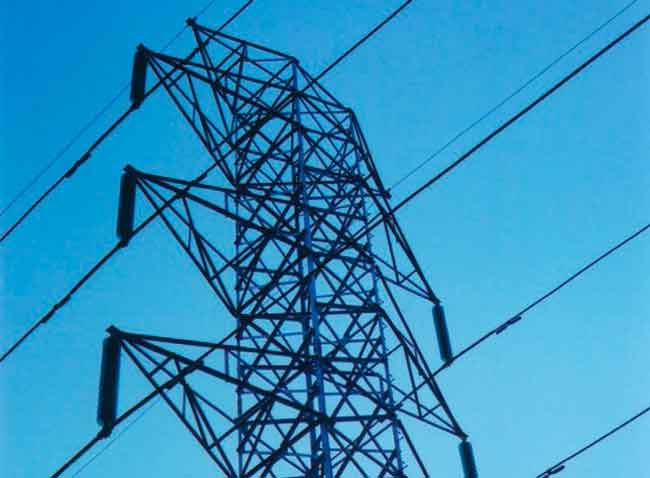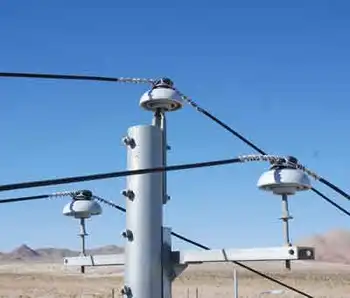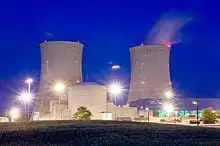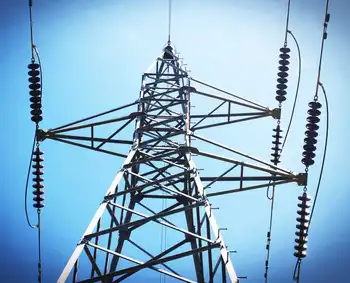50 Dirtiest U.S. Power Plants
By Electricity Forum
Substation Relay Protection Training
Our customized live online or in‑person group training can be delivered to your staff at your location.

- Live Online
- 12 hours Instructor-led
- Group Training Available
A searchable database ranking 378 U.S. power plants on carbon dioxide, sulfur dioxide (SO2), nitrogen oxide (NOx) and mercury pollution is now available online at http://www.dirtykilowatts.org.
The 12 states with the heaviest concentrations of the dirtiest power plants - in terms of total tons of carbon dioxide emitted - are: Texas (five, including two of the top 10 dirtiest plants); Pennsylvania (four); Indiana (four, including two of the top 10 dirtiest plants); Alabama (three); Georgia (three, including two of the top three dirtiest plants); North Carolina (three); Ohio (three); West Virginia (three); Wyoming (two); Florida (two); Kentucky (two); and New Mexico (two).
The "Dirty Kilowatts" report also ranks the worst power plants on the basis of sulfur dioxide, nitrogen oxide and mercury, looking at all four pollutants both in terms of total tons of emissions and also emission rate (pounds per megawatt-hour of electricity produced). For example, just 14 percent of the 378 ranked fossil-fuel-burning power plants account for 40 percent of their sulfur dioxide emissions.
Taken together, the 378 plants ranked in this report represent about a third of all power plants tracked in EPAÂ’s inventory, but they account for almost 90 percent of the electricity generated by the plants in EPAÂ’s inventory, and approximately half of total U.S. electric generation. Plants in North Dakota, Ohio, Pennsylvania, Texas, Indiana, and South Dakota top the non-CO2 rankings.
The EIP report notes: “Nationwide, the power plants that provide electricity to run our homes, businesses, and factories also account for 40 percent of carbon dioxide, roughly two thirds of sulfur dioxide, 22 percent of nitrogen oxides, and roughly a third of all mercury emissions (in the U.S.)… Power plants are major contributors to global warming, emitting billions of tons of carbon dioxide (CO2) each year. In addition, power plants emit millions of tons of sulfur dioxide (SO2) and nitrogen oxides (NOx), pollutants that trigger asthma attacks and contribute to lung and heart disease, and cause smog and haze in cities and national parks. And, power plants emit dangerous toxins like mercury, a neurotoxin especially harmful to children and developing fetuses.”
Ilan Levin, counsel, Environmental Integrity Project, said: “While Congress is poised to seriously consider legislation to limit the greenhouse gases that made 2006 the hottest year on record, the electric power industry is racing to build a new fleet of coal-fired power plants that rely on conventional combustion technologies that would only accelerate global warming. Once utility companies secure their air pollution permits, we can expect them to argue that these new plants should be ‘grandfathered,’ or exempt from any pending limits on greenhouse gases. We’ve been through this before.
“When the original Clean Air Act was passed in 1970, the electric utility industry persuaded Congress to not impose strict pollution controls on old power plants, because they would soon be replaced by newer state-of-the-art facilities. Yet despite the industry’s promises, many of the nation’s oldest and dirtiest power plants continue to operate today. Americans pay the bill for that delay when they suffer the ill health consequences of breathing needlessly dirty air.”
Mary Ann Hitt, executive director of the regional nonprofit organization Appalachian Voices in Asheville, N.C., said: “On the ground in Appalachia, we see the impact of these dirty coal plants every day and in every part of our lives. We are losing homes and communities to mountaintop removal mining, and losing the lives of loved ones to health problems triggered by air pollution.”
Jan Jarrett, vice president, Citizens for Pennsylvania's Future (PennFuture), Harrisburg, PA, said: “This report shows, most of all, that the importance of strong environmental laws cannot be overstated. Reductions in sulfur dioxide and nitrogen pollution from power plants are a direct result of a strong federal Clean Air Act, but it took more than 30 years. That’s one of the reasons we fought so hard for the Pennsylvania mercury rule, which will cut mercury pollution by 90 percent by 2015. We knew the federal government wasn’t about to take action, so the state of Pennsylvania had to. Now it’s time to demand cuts in carbon dioxide pollution to fight global warming.”
Valerie True, spokesperson, Southern Alliance for Clean Energy, with offices in Georgia, Tennessee and North Carolina, said: “This report not only highlights the threats from old power plants, but the future risk should utility customers be forced to pay for the expansion of this dirty form of energy. Proposals for new coal-fired power plants are popping up across the nation. Given the imminent risks of global warming, the nation needs to take immediate action to clean up these old power plants and stop the construction of new coal-fired plants.”
Dean Hulse, member, Clean Electricity Committee of the Dakota Resource Council, Dickinson, N.D., said: “This report is the ‘canary in the coal mine’— it points out serious problems that require immediate attention. The global warming debate is over. We are heating up the earth, and the burning of coal is one of the biggest contributors of global warming pollution.
“Beyond the burning of coal is the issue of coal mining. Although not discussed in this report, the mining of coal damages land and water and moves farmers and ranchers off the land. In North Dakota, keeping the coal dinosaur alive hinders the economic development of renewable energy, including wind energy, in which North Dakota leads the nation.”
The new EIP report highlights ways to reduce CO2 emissions from power plants. First, the time has come to phase out and permanently retire the nationÂ’s oldest and least efficient plants, and reduce our dependence on coal. Reducing electricity demand, through smarter building codes, and low-cost conservation efforts such as weatherization of homes and installation of more efficient home and business appliances, will lead to CO2 reductions.
Investments in renewable energy sources, such as solar and wind power, should be encouraged, and investments in fossil fuel-based electric generation should be a last resort.
And, if new coal plants are to be built, then they must be designed to drastically reduce CO2 emissions. Carbon capture and sequestration have promise, and currently available and economically viable technologies – for example, “ultra-supercritical” designs for steam boilers, gas turbines (instead of steam), blending cleaner fuels with coal, such as natural gas and biomass – can almost double fossil-fuel-fired plants’ thermal efficiency, up to 60 percent, thus lowering CO2 emissions.
One bright spot in the EIP report: 37 years after the Clean Air Act, power plants are finally starting to clean up their sulfur dioxide emissions, thanks to a combination of factors including enforcement actions, tough state laws, and reductions anticipated from EPAÂ’s Clean Air Interstate Rule (CAIR).
The scrubbers that power companies are beginning to install will reduce sulfur dioxide emissions by as much as 90 percent as some of the dirtiest plants. However, while CAIR establishes a two-phase cap for S02, ending at 2.5 million tons in Eastern states in 2015, due to early reductions and banking of credits for use later, the cap is unlikely to be met until well beyond 2015.
KEY EIP FINDINGS
Carbon Dioxide: Given the absence of any federal standards, carbon dioxide emissions from power plants are now at roughly 2.5 billion tons per year. About two-thirds of the heat energy that is consumed at a typical coal-fired power plant is wasted, and that inefficiency contributes directly to high CO2 emissions from these facilities. Eliminating CO2 emissions from existing power plants is currently technically unfeasible, but reducing electricity demand, through energy efficiency and conservation measures, would yield significant CO2 reductions in the near-term, while new technologies develop.
One major cause for concern: A wave of new coal-fired power plants are being permitted and built across the country. Absent aggressive national climate policy and the retirement of existing facilities, these new coal plants will contribute to a projected 34 percent increase in U.S. carbon dioxide emissions over the 2005-2030 period.
Large lignite-burning power plants in North Dakota and Texas rank among the worst CO2 polluters based on emission rate. Lignite is a low-grade fuel, abundant in places like Texas and North Dakota, and its comparatively low BTU (heat) value means more CO2 for the electricity it generates. Nine plants across 8 states rank in the top 50 for both overall emissions rate and overall tons of CO2 emitted: Texas (TXUÂ’s Martin Lake and Monticello), Montana (Colstrip), Minnesota (Sherburne County), Wyoming (Laramie River), Indiana (Schahfer), Florida (Big Bend), Nebraska (Gerald Gentleman), and North Dakota (Coal Creek).
Sulfur Dioxide. Power plants, especially those that burn coal, are by far the largest single contributor of SO2 pollution in the United States, accounting for approximately 67 percent of all SO2 emissions nationwide. The top 50 plants averaged 21.1 pounds of sulfur dioxide per megawatt-hour, compared to only one pound per megawatt-hour for similar plants equipped with state of the art scrubbers.
Of all 378 plants ranked, the top 50 plants with the worst emission rates accounted for 40 percent of SO2 emissions, but only 13.7 percent of electric generation.
Indiana (five plants), Ohio (eight plants), Pennsylvania (eight plants), and Georgia (six plants) have the heaviest concentrations of the dirtiest plants in the nation for SO2. Together, these four states accounted for more than half of all the top 50 emitters. PSI EnergyÂ’s Gallagher plant, in Indiana, claimed the top spot as the nationÂ’s dirtiest power plant, generating just over 40 pounds of sulfur dioxide per megawatt-hour of electricity.
Southern Company’s Bowen plant in Georgia continued to lead the nation as the top SO2 emitter, with a whopping 206,441 tons in 2006 – 20,000 tons more than it emitted in 2005, and 40,000 tons more than it emitted in 2004. Reliant’s Keystone plant in Pennsylvania was the number two highest emitter, with more than 160,000 tons of SO2. Both these plants are expected to install scrubbers by 2010, which should substantially bring down SO2 emissions.
Nitrogen Oxide: Nitrogen oxides emissions dropped slightly in 2006, and are expected to decline still further in eastern states over the next five years. Rules to limit the interstate transport of NOx during the summer ozone season in eastern states were adopted in the late nineties (the “NOx SIP Call”), and emission ceilings have been ratcheted steadily downward by law.
Also, the CAIR rule moves the Acid Rain (Phase 1) NOx cap forward a year, to 2009, and sets a 1.3 million ton cap in 2015. Lastly, tough new state standards like the Maryland Healthy Air Act should lead to additional reductions in year-round NOx emissions.
Unfortunately, this trend is not apparent in Western states where neither CAIR nor ozone transport rules apply. Many plants with high NOx emissions are located in these states, and in states not included in the NOx “SIP Call,” such as North Dakota, Minnesota, and Florida.
The top 50 plants had an average emission rate of 5.47 pounds of NOx per megawatt-hour, more than double the 2.57 lbs/MWh average for all 378 of the nation’s largest power plants. Of the 378 plants, the top 50 accounted for 25 percent of all NOx emissions but only 11.7 percent of net electric generation. Many plants in the top 50 are in states with less stringent NOx emission limits because they do not fall under the “NOx SIP call,” a federal rule designed to reduce summertime ozone in many eastern U.S. states. (NOx is a precursor to ground-level ozone.) This shows, not surprisingly, that electric utilities do not reduce NOx emissions unless they are required by law to do so. Of the 378 plants ranked, the top 50 accounted for 41.5 percent of NOx emissions, and only 28.7 percent of net generation. Arizona Public Service Company’s Four Corners (New Mexico), and TVA’s Paradise (Kentucky) plants topped the list, emitting 44,658 tons and 43,022 tons, respectively.
Mercury: Power plant mercury emissions remain steady as compared to previous years. EIP’s report ranks plants based on 2005 data, which is the most recent publicly available information from EPA’s Toxics Release Inventory. The 486 plants that are tracked in EPA’s Toxics Release Inventory reported 48.3 tons of mercury air emissions in 2005. Of these, this report ranks only the 274 “large” power plants (i.e., those plants that generated at least 2 million MWh in 2005). These largest 274 plants emitted 43.5 tons of mercury in 2005. Many plants are installing scrubbers to control sulfur dioxide, and mercury emissions should decline as a co-benefit of SO2 controls. But, EPA’s new power plant mercury rule is unlikely to have any measurable benefit in the short-term. Power plant mercury emissions are expected to decline to roughly 24 tons in 2020 – significantly higher than EPA’s so-called cap of 15 tons by 2018, as power plants “bank” pollution allowances in the early years of the rule’s implementation. Widespread use of banked allowances means that EPA’s cap of 15 tons will likely not be met until 2026 or beyond.
For all plants ranked for mercury, the top 50 plants with the highest emission rates together emitted 16 tons of mercury – a third of all power plant mercury pollution – but generated less than 18 percent of the electricity. For the third year in a row, American Electric Power’s Pirkey plant (Texas) and Reliant’s Shawville plant (Pennsylvania) are the top two dirtiest plants based on mercury emission rates. The top fifty power plant mercury polluters accounted for almost 21 tons, or 43 percent of the electric power industry’s mercury emissions. TXU’s Martin Lake (Texas) plant ranked number one, with 1,705 pounds of mercury emissions. Southern Company’s Scherer plant (Georgia) came in second, emitting 1,662 pounds. Southern Company and TXU also shared the third place spot, reporting 1,595 pounds of mercury emissions from these companies’ Miller (Alabama) and Monticello (Texas) plants. A total of 23 plants in 12 states ranked in the top 50 for both emission rate and total pounds emitted. Six Texas plants rank in the top 50 for both emission rate and total pounds and two of these plants, TXU’s Big Brown and American Electric Power’s Pirkey, rank in the top 10 for both measures.
Power plants are responsible for about 40 percent of all man-made CO2 emissions in the nation, and unlike emissions of SO2 and NOx, the electric power industryÂ’s CO2 emissions are projected to steadily rise. Carbon dioxide emissions contribute to global warming.
Sulfates (from SO2) are major components of the fine particle pollution that plagues many parts of the country, especially communities nearby or directly downwind of coal-fired power plants. Sulfur dioxide also interacts with NOx to form nitric and sulfuric acids, commonly known as acid rain, which damages forests and acidifies soil and waterways. Harvard School of Public Health studies have shown that SO2 emissions from power plants significantly harm the cardiovascular and respiratory health of people who live near the plants. According to EPA studies, fine particle pollution from power plants results in thousands of premature deaths each year.
Nitrogen oxide is tied to ground-level ozone, which is especially harmful to children and people with respiratory problems such as asthma. Ground-level ozone is formed when NOx and volatile organic compounds (VOCs) react in sunlight. NOx also reacts with ammonia, moisture, and other compounds to form fine particle pollution, which damages lung tissue and is linked to premature death. Small particles penetrate deeply into sensitive parts of the lungs and can cause or worsen respiratory disease such as emphysema and bronchitis, and aggravate heart disease.
Coal-fired power plants are the single largest source of mercury air pollution, accounting for roughly 40 percent of all mercury emissions nationwide. Mercury is a highly toxic metal that, once released into the atmosphere, settles in lakes and rivers, where it moves up the food chain to humans. The Centers for Disease Control has found that roughly 10 percent of American women carry mercury concentrations at levels considered to put a fetus at risk of neurological damage.











